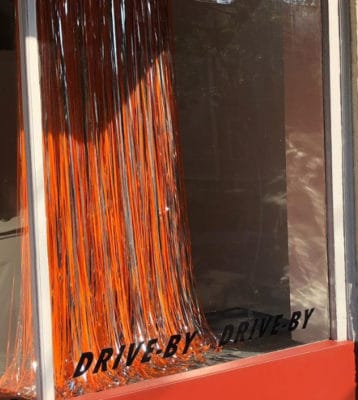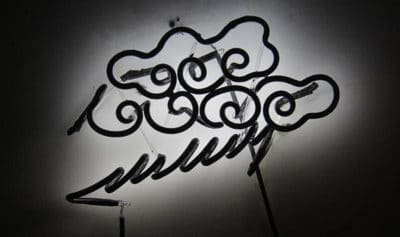January 13 – April 1, 2010
The Beehive, Boston MA
Winter Wonderland, an exhibition organized for The Beehive by guest curators Kathleen O’Hara (OH Projects) and Beth Kantrowitz (bk projects), is a selection of work by eleven artists who address the subject of winter, the holidays, ice, snow, cold, etc. in their work.
Meg Alexander will install a site-specific wall painting from her Sorry Deer series. Inspired by an incident when she hit a deer on a wintery road, Alexander’s spare, haunting images seek to capture the relationship between experience, perception, and memory.
Steve Aishman grows then photographs mutant plants that he has carefully grafting together from different flowering species. Stripped of their pots and suspended against a black background, these botanical misfits are reminiscent of 17th century, trompe l’oeil still life paintings.
Meryl Blinder’s spare pencil drawings of fir trees on a white ground that at first glance suggest Christmas tree farms on a snowy day. The careful placement of each tree and the delicacy of the drawing in Blinder’s work suggest a formal sophistication and depth of content that belies the apparent simplicity of her work.
Chris Faust begins his work with a simple photograph, often a landscape with a lone figure, which he translates into a painting. In Ice Ribbons, the figure is dwarfed by the ice pattern on a frozen lake. Never quite in focus, the painting is like a memory of the solitary stillness of winter.
Helga Felleisen will construct a vellum hanging for a site-specific installation at The Beehive. Felleisen’s hand-cut, translucent scrims are fabricated from delicately patterned layers to create ghostly, ephemeral environments.
Sue McNally’s visionary landscapes depict the craggy coast and majestic mountains painted by 19th century landscape painters. In McNally’s hands these traditional subjects are transformed into abstracted landscapes that glow with color and roil with energy.
John Obuck’s small landscapes and still lifes combine painterly vignettes with planar abstraction. Nested within concentric colored boxes, his playfully bleak winter desert scenes are a counterpoint to the snow and sparkles of traditional winter wonderlands.
Kathleen O’Hara’s landscapes are set in the shallow space of a movie set. Houses, trees, and other landscape elements are used as props to construct allegorical scenes that portent a dark side to what we comfortably accept as normal.
Jennifer Riley piles up mounds of icy blue, interlocking shards to create ice bergs and flows in her two small paintings, Floating Iceberg Cyborg and Not Another Spill. With pale, sky-like backdrops these pieces fall somewhere between landscape and geometric abstraction.
Ryan Steadman blurs the line between image and physical object. Focusing on iconic subjects, in this case snow, he limits himself to basic art supplies, out-of-the-tube colors, and a step-by-step process, to make paintings that mimic actual things.
Suara Welitoff’s black and white video, Snowy, allows as to observe snow quietly falling. Because the piece has no sound, our personal recollections of watching snow become part of the viewing experience.











